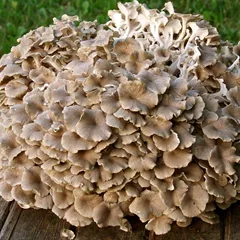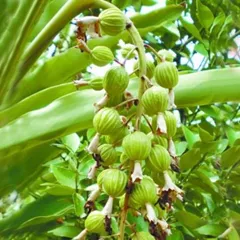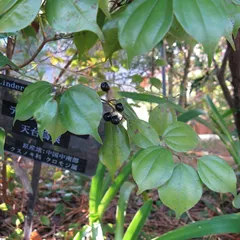Spleen Deficiency with Dampness
The information provided here is not a replacement for a doctor. You shouldn't use it for the purpose of self-diagnosing or self-medicating but rather so you can have a more informed discussion with a professional TCM practitioner.
At a glance
Preliminary reading: What is a pattern?
Diagnosis
Common symptoms: Edema Diarrhea Urinary difficulty General sensation of heaviness
Treatment
Common formulas: Wu Ling San
Pathology
Spleen Deficiency with Dampness is a pattern of disharmony in Chinese Medicine.
Chinese Medicine views the human body as a complex system that tends toward harmony. A pattern of disharmony is a disorder that prevents that harmony from occurring.
Patterns give rise to symptoms that may at first glance seem unrelated from a Western standpoint but that actually make a lot of sense when one understands Chinese Medicine theory. For instance here Spleen Deficiency with Dampness gives rise to such diverse symptoms as edema, general sensation of heaviness, diarrhea and urinary difficulty (as well as fourteen others).
Patterns aren't exactly the Chinese Medicine equivalent to Western diseases, they're rather the underlying causes behind diseases or health conditions. Here Spleen Deficiency with Dampness is thought to sometimes induce conditions such as vaginal itching, hepatitis or cystitis (as well as seventeen others).
Diagnosing Spleen Deficiency with Dampness
Diagnosing a pattern in Chinese Medicine is no easy feat and should be left to professional practitioners. In particular one has to know how to differentiate between different types of pulses and tongue coatings, shapes and colors as well as learn to read from a long list of seemingly unrelated symptoms.
Main symptoms: Edema Diarrhea Insomnia Tiredness Dry mouth Dark Urine Loose stools Vaginal pain Vulvar itching Candida infection Urinary difficulty Trichomonas infection White vaginal discharge Sticky vaginal discharge Smelly Vaginal discharge Heat in vaginal and vulvar Excessive vaginal discharge General sensation of heaviness
Treating Spleen Deficiency with Dampness
Herbal formulas used to treat Spleen Deficiency with Dampness



The top herbs in Wu Ling San are Water Plantain (Ze Xie), Poria-Cocos Mushrooms (Fu Ling) and Polyporus (Zhu Ling)
Wu Ling San
Source date: 220 AD
Number of ingredients: 5 herbs
Key actions: Promotes urination,. Warms the Yang. Strengthens the Spleen. Promotes Qi transformation function. Drains Dampness. Clears edema.
Formula summary
Wu Ling San is a 5-ingredient Chinese Medicine formula. Invented in 220 AD, it belongs to the category of formulas that promote urination and leach out Dampness.
Besides Spleen Deficiency with Dampness, Wu Ling San is also used to treat Yin Excess or Kidney Yang Deficiency with Water overflowing.



The top herbs in Liu Jun Zi Tang are Ginseng (Ren Shen), Atractylodes Rhizomes (Bai Zhu) and Tangerine Peel (Chen Pi)
Liu Jun Zi Tang
Source date: 1107
Number of ingredients: 6 herbs
Key actions: Tonifies Qi. Strengthens the Spleen and Stomach. Clears Phlegm and mucus. Promotes appetite.
Formula summary
Liu Jun Zi Tang is a 6-ingredient Chinese Medicine formula. Invented in 1107, it belongs to the category of formulas that tonify Qi.
Besides Spleen Deficiency with Dampness, Liu Jun Zi Tang is also used to treat Qi Deficiency or Spleen and Lung Qi Deficiency.



The top herbs in Bi Xie Fen Qing Yin are Fish-Poison Yam (Bi Xie), Sharp-Leaf Galangal Fruits (Yi Zhi Ren) and Lindera Roots (Wu Yao)
Bi Xie Fen Qing Yin
Source date: 1732 AD
Number of ingredients: 4 herbs
Key actions: Clears Heat. Warms the Kidneys. Drains Dampness. Separates the clear from the turbid.
Formula summary
Bi Xie Fen Qing Yin is a 4-ingredient Chinese Medicine formula. Invented in 1732 AD, it belongs to the category of formulas that warm and transform water and Dampness.
Besides Spleen Deficiency with Dampness, Bi Xie Fen Qing Yin is also used to treat Damp-Heat in the Bladder.
Related conditions
Please keep in mind that a Western Medicine condition can be caused by several Chinese Medicine patterns of disharmony and vice versa. As such a patient suffering from one of the conditions below will not necessarily be suffering from Spleen Deficiency with Dampness, it is just one pattern that's commonly associated with the condition. Click on a condition to learn what other patterns it's associated with.
Vaginal itching Hepatitis Cystitis Migraine Trigeminal neuralgia Conjunctivitis Pyelonephritis Edema Glomerulonephritis Nephrotic syndrome Hydrocele Motion sickness Meniere's disease Gastrectasis Acute enteritis Ascites Congestive heart failure Pericardial and pleural effusions Hydrocephalus Polyhydramnios
Special highlight: the link between vaginal itching and Spleen Deficiency with Dampness

Ginseng (Ren Shen) is the key herb for Liu Jun Zi Tang, a formula used for vaginal itching caused by Spleen Deficiency with Dampness
Typical symptoms for vaginal itching caused by Spleen Deficiency with Dampness: Insomnia Tiredness Dry mouth Dark Urine Loose stools Vaginal pain Vulvar itching Candida infection Trichomonas infection White vaginal discharge Sticky vaginal discharge Smelly Vaginal discharge Heat in vaginal and vulvar Excessive vaginal discharge
Recommended herbal formulas: Liu Jun Zi Tang, Bi Xie Fen Qing Yin
Dampness is the most common reason for vaginal and vulvar itching. Dampness can find its origins Externally or Internally, the latter being the case for this pattern. What causes the Dampness here is Spleen Qi Deficiency. The Spleen is responsible for transforming and transporting Body Fluids. An impaired Spleen function can therefore lead to an accumulation of Dampness in the Lower Burner which then gets sent to the Uterus and causes itching.
Excessive physical work or too much sport can harm...Read more about vaginal itching
